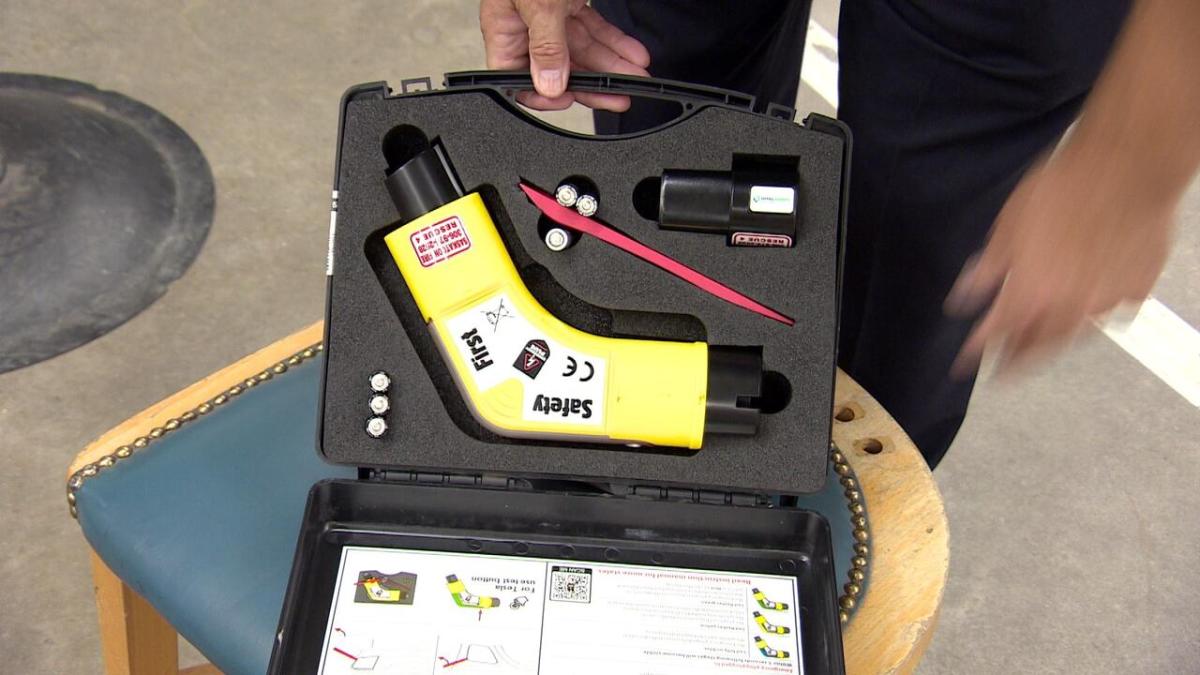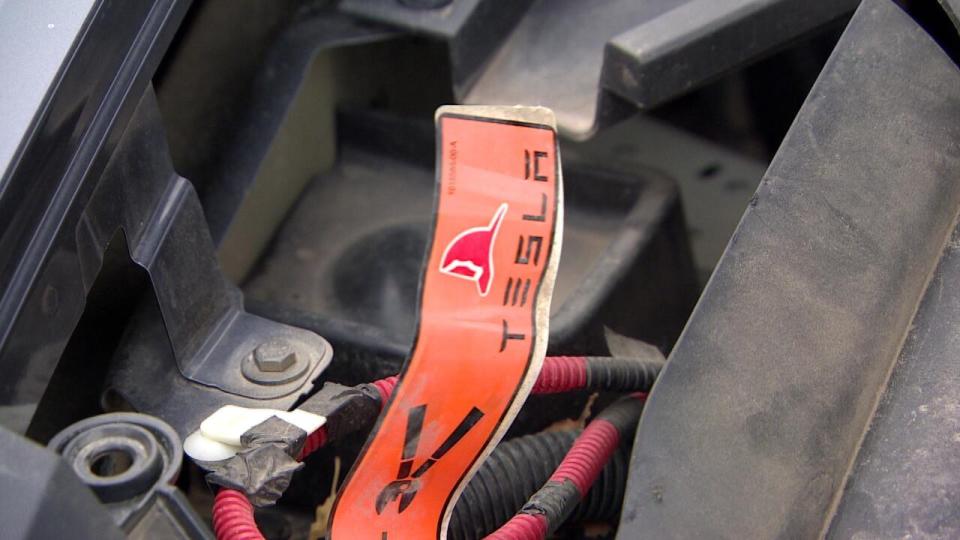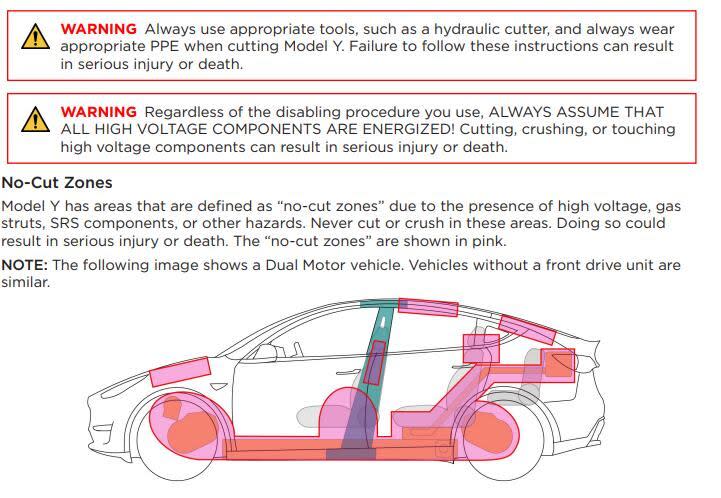


By the time the red Tesla finally came to rest, after the driver ran it over a spike belt and hit another vehicle, first responders en route were focused on a tablet detailing the schematics of the car’s electrical system.
The lithium-ion battery packs and high-voltage lines supplying electricity to the cars create high stakes for first responders.
“There are concerns with electric vehicles, as you are driving around an incredible amount of energy that is stored in a very condensed, energy-dense type of format,” said Matthew Pointer, a first responder in Regina and president of the Saskatchewan Electric Vehicle Association.
Saskatoon police had been following the Tesla by ground and air on the morning of Sept. 21. They called off the ground chase because of the high speeds. The police plane tracked it across the city, with officers laying down a deflation device on Warman Road near Cavers Street.
The Tesla ran over the spike belt and then hit the front of a Lincoln, driven by Dan Deyo’s sister. He came to the scene to take his sister and niece to hospital.
“The Tesla clipped the front driver’s side and took off the wheel. It looks like it’s totalled,” he said in an interview.
“The Tesla was up against the lane barricades.”
The driver took off on foot but was arrested not far away. The 24-year-old driver is facing charges of evading police, impaired driving, dangerous driving, obstructing police, possession of a controlled substance (methamphetamine) and failure to comply with court-ordered conditions.
Police said the car had not been reported stolen.

Matthew Pointer (Submitted)
First responder toolkit
Pointer said first responders run through a checklist when dealing with electric autos.
“We’ve got to essentially do a size-up of the vehicle on scene, to make sure that the vehicle is stable and safe, not only for the the victim themselves that’s involved in the incident, but also any first responders that will be approaching that incident,” he said.
The first step is identify the vehicle. Second, identify the drivetrain (the specific mechanical and electrical sequence linking the engine to the wheels).


Power cables with first responder instructions in a Tesla. (CBC)
“And then third, you have the ability to essentially pick the vehicle apart section by section to look at the different drivetrains, the airbag systems, the seat belt pretensioners and things like that,” Pointer said. “So essentially we’re able to take the vehicle apart piece by piece with this computer software before anybody gets their hands on the vehicle.”
Dealing with electric vehicles — including city buses — has been on the Saskatoon Fire Department’s radar for about six years, says deputy chief of operations Rob Hogan.
Crews in the rescue trucks are now equipped with computer tablets that lay out the electrical systems and identify no-go parts of the autos, he said.
Once responders know the make and model, they move to the next level — making sure the vehicle doesn’t move and then isolating the power source. Last year, crews began travelling with a “de-mobilizer” for electric autos.
The pistol-shaped device is plugged into the charge port.
“So what it will do, for lack of a better term, is tell the vehicle it’s being charged. So it puts the parking brake on, puts it in park, tells it not to move,” Hogan said.
“De-energizing” the auto is a separate step, Pointer said.
“The car industry’s been doing it for quite some time now, at least I would say 15 years, where all of the high energy cables have basically been all highlighted in orange. So that those are a no-go for a first responder to possibly cut or at all interact, I guess, with those high voltage systems,” he said.
It takes 30 to 60 seconds to de-energize the entire vehicle so that it’s not a threat to the victim or the first responders, Pointer said.


Tesla has a first responder package available online. (Tesla)
Where things may get really complicated for first responders is when the electric auto has sustained significant structural damage, specifically to its battery packs.
“We don’t have a ton of electric vehicles in the city so it’s not a high call volume for us,” said Hogan.
“If it was a gasoline vehicle with a punctured tank, we deal with those on a regular basis.”
Pointer said automotive engineers spent considerable time on the battery packs.
“These vehicles do have a significant amount of additional engineering out into them to prevent any sort of damage to the battery pack themselves. They are quite robust in the sense that the battery pack is actually engineered into the frame of the vehicle,” he said.
“So if there is a point of collision with another vehicle, usually that point of collision is going to be well above the battery pack itself.”
According to SGI, there are currently 2,296 electric vehicles registered in Saskatchewan.